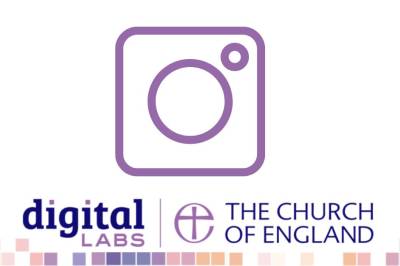04/06/2021
Organising, recording and editing a podcast can be a lot of work and not everyone has the time or resources to start one. Therefore, what we’re looking at here is how to take advantage of the podcasting format with existing video content. This could be your weekly online service, or any other video content you produce that would also lend itself to being solely audio, such as an at-home sermon or an interview with a member of your local community.
The process of turning your video content into a podcast is relatively simple and can be done on a low or no budget.
Step 1: Convert video to audio only
First of all, you will need the software to convert your video to purely audio. Most video editing software allows you to export as audio only, so you may already have the means to do this if you are using a program like Final Cut or Premiere Pro.
If this isn’t an option, you can use a video transcoding program like Handbrake to convert your video file into an audio file. There are other options available but Handbrake is both free and widely used, so tutorials and help are easy to find online.
It’s best to convert to a WAV or high quality 320kbps MP3 audio format to retain audio quality. However, this choice may be dictated by which provider you choose for podcast distribution, as they each have specific upload requirements.
Step 2: Choose a podcast host
On its most basic level, a podcast host hosts your audio and provides you with a podcast feed (also known as an RSS feed) to access the podcast. Further to this, it can provide you with the tools to easily distribute your podcast to platforms such as Apple Podcasts and Spotify, as well as providing analytics, website integration and various other features.
The most well-known platform that can function as a podcast host is SoundCloud. You may already have a SoundCloud account, in which case this could be the most straightforward option. However, SoundCloud is not primarily a podcast host and lacks some of the tools and ease of use that other platforms provide.
Below are a few examples of the many podcast hosts available:
SoundCloud
Pros
- Well known and established (you may already have an account).
- In addition to a podcast feed, you can also direct people to your SoundCloud page.
- Unlimited audio is only £7.50 a month.
Cons
- Their free plan allows up to 3hrs audio in total. You could easily use this up within a month and then you would need to delete old audio every time you want to upload something new.
- Podcasting functions are limited. Manual submission to all podcasting platforms is required and analytics are not tailored to podcasting.
Anchor. FM
Pros
- Completely free with unlimited hosting.
- Dedicated podcasting platform – provides podcast specific tools including ease of distribution.
- Owned by Spotify so has strong funding and a growing feature set.
Cons
- If you ever want to switch to a different provider this is made very difficult and tricky.
Buzzsprout
Pros
- Free plan gives 2hrs hosting a month.
- Dedicated podcasting platform – provides podcast-specific tools including ease of distribution.
Cons
- Episodes expire after 90 days on the free plan.
Captivate
Pros
- Lots of features for building and growing your podcast.
- Easy distribution to podcasting platforms.
- Unlimited hosting.
- Allows multiple “shows” meaning you can host multiple podcasts from the same plan at no extra cost.
Cons
- No free plan - the cheapest option is £19 per month. A free trial is available.
Step 3: Upload and publish your podcast
Once you’ve decided on and signed up to a podcast host, you can now set up your podcast. This primarily involves choosing a title, an image, a description and the URL for your RSS feed (e.g. https://feeds.captivate.fm/YOUR-PODCAST-NAME/). There will likely be some other information to enter but the majority of platforms have a help section to guide you through this.
You can now upload your audio and publish it. You could choose to publish weekly (perhaps if you have a weekly online service) or use it as a feed for different types of episodes (e.g. Wednesday Sermon, Saturday Interviews, Sunday Services). Just make sure to label both your podcast and episodes clearly so that your audience can easily find the podcast on their chosen podcasting platform.
Step 4: Distribute your podcast
With an RSS feed your podcast can be accessed online, in any RSS app or on some podcasting platforms that allow custom RSS feeds. However, the place where most people consume podcasts is on a platform like Apple Podcasts or Spotify. As mentioned above, some podcast hosts (such as Anchor. FM and Podbean) provide easy ways to get your podcast on these platforms and will guide you through the process, whereas others (such as SoundCloud) requires entirely manual submission.
Once your podcast is live on Apple, Spotify and even Google Podcasts, Amazon Music and anywhere else you’d like it to be found, you can start encouraging your audience to subscribe. Once they do, they will be notified of any new episodes you publish on their preferred platform.
(A note on Apple Podcasts: many podcasting platforms and apps, such as Pocketcasts and Overcast use Apple’s API. This means that they draw all of their podcast information from Apple. So once your podcast is live on Apple Podcasts, it won’t be long before it's live on these and many more platforms).
James Newhook
Audio Producer
Keep up to date with all things digital and join our Digital Labs newsletter


